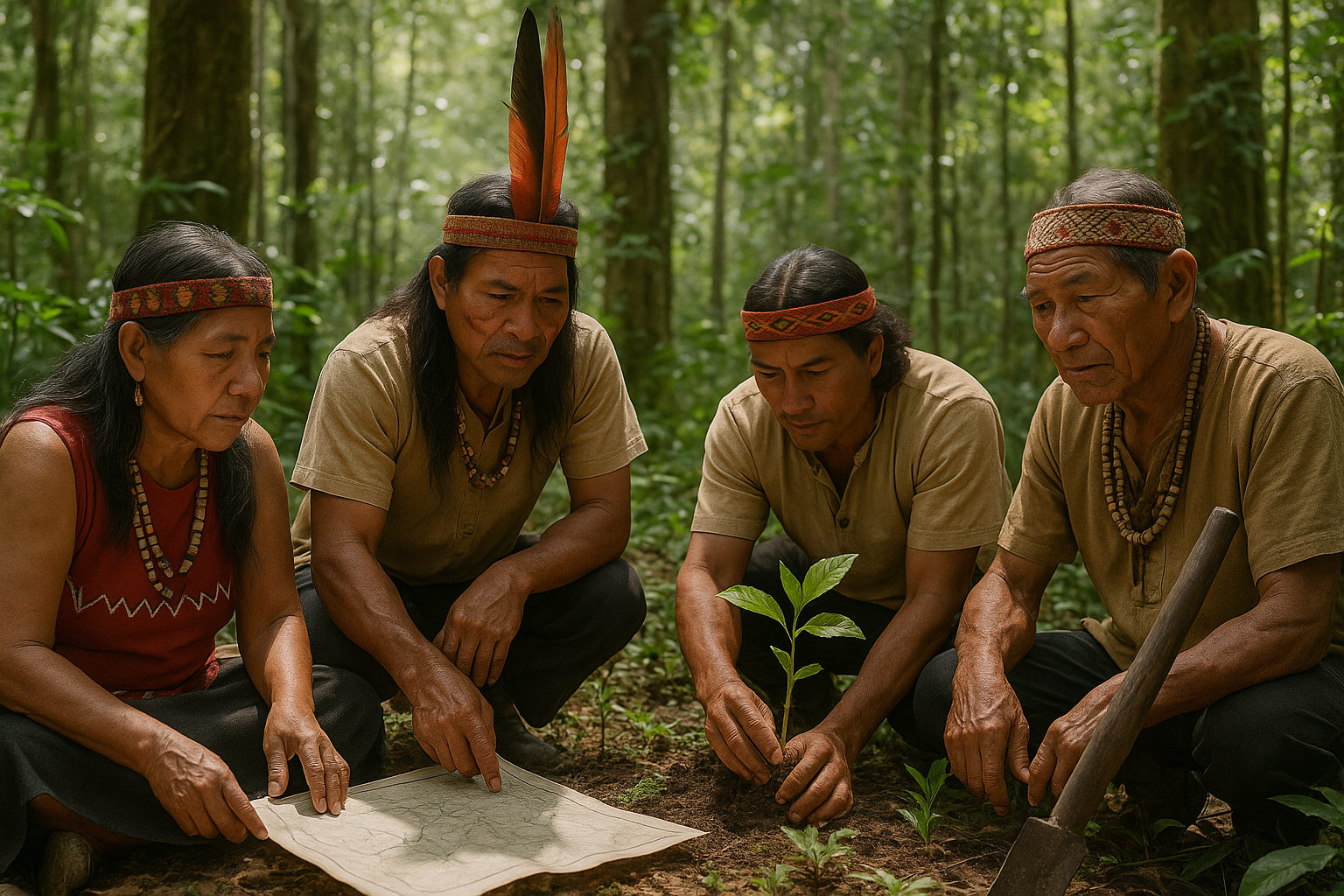In a world that often feels divided by borders, languages, and cultures, the spirit of generosity serves as a unifying force that transcends these barriers. 🌍 Global generosity, particularly in the form of foreign aid, stands as a testament to the profound human capacity for empathy and support. This complex yet fascinating topic delves deep into how countries extend their hands across seas and borders to help those in need, fostering not only relief but also long-term development and stability. The story of foreign aid is not just about numbers and policies; it’s about real lives transformed, communities uplifted, and a global network of solidarity that holds us all together.
At its core, foreign aid is an expression of a nation’s commitment to the betterment of the global community. It’s about recognizing that while we may be separated by distance, we are all connected by the challenges we face and the dreams we share. Whether it’s providing disaster relief, supporting education, promoting health initiatives, or encouraging economic development, foreign aid takes many forms and serves numerous purposes. Yet, the common thread is the vision of a world where everyone has the opportunity to thrive. This article will explore how certain countries are making significant impacts through their foreign aid programs, offering insights into the motivations behind their generosity and the outcomes of their efforts.
The tapestry of foreign aid is woven with the contributions of nations that, despite their own challenges, choose to prioritize the welfare of others. From the Scandinavian countries known for their substantial aid contributions relative to their GDP, to larger nations whose extensive aid budgets aim to address both humanitarian and strategic goals, each has its own unique story. We will delve into case studies of countries like Sweden and Norway, whose aid philosophies are rooted in a deep-seated commitment to human rights and sustainable development. Additionally, we will examine the United States, whose foreign aid strategy often intertwines with geopolitical interests, yet also spearheads significant humanitarian initiatives worldwide.
Beyond the financial figures, what truly brings foreign aid to life are the stories of change it fosters. These are narratives of hope, where communities devastated by natural disasters rebuild stronger than before, where children in impoverished regions gain access to education, and where healthcare systems in developing countries receive the support they need to combat diseases. We will share inspiring stories of individuals whose lives have been transformed by these efforts, offering a human perspective on the abstract concept of foreign aid. These accounts serve as powerful reminders of the real-world impact of generosity on a global scale.
As we embark on this exploration of global generosity, we will also address the criticisms and challenges that come with foreign aid. While the intentions behind aid are noble, the execution can sometimes be fraught with issues such as dependency, misallocation of resources, or political manipulation. This article will critically examine these concerns, highlighting the ongoing debate about the effectiveness of foreign aid and the ways in which countries are striving to overcome these obstacles. Through this balanced perspective, we aim to provide a comprehensive understanding of the complexities of foreign aid and the continuous efforts to enhance its impact.
The Role of Foreign Aid in Global Development
Foreign aid has long been a cornerstone of international relations and global development strategies. Countries around the world contribute billions of dollars annually to support initiatives that aim to alleviate poverty, improve healthcare, promote education, and enhance infrastructure in less developed nations. But beyond the statistics and budget sheets lies a complex web of motivations, strategies, and impacts that shape the way foreign aid is distributed and utilized.
Foreign aid can be viewed from multiple perspectives: as a moral obligation, a political tool, or an economic investment. For donor countries, providing aid can enhance their global standing and foster diplomatic relations. Meanwhile, recipient countries often view aid as a lifeline that can spur economic growth and improve the quality of life for their citizens. However, the efficacy of foreign aid is a subject of intense debate, with critics arguing that it can lead to dependency and corruption if not managed properly.
To understand the current landscape of foreign aid, it’s essential to explore the motivations of donor countries, the strategies they employ, and the tangible impacts of their contributions. We’ll delve into the roles of key players in the international aid arena and examine case studies that highlight successful initiatives. This analysis will provide insights into the multifaceted world of foreign aid, shedding light on its potential to drive meaningful change on a global scale.
The Leading Contributors to Foreign Aid
Several countries stand out as major contributors to foreign aid, each bringing unique approaches and priorities to the table. The United States, for instance, is one of the largest donors in terms of sheer volume, allocating significant resources to promote stability and democracy in various regions. The European Union collectively plays a substantial role, with member states coordinating their efforts to maximize impact. Nordic countries, known for their high per capita contributions, prioritize sustainable development and social welfare in their aid programs.
According to data from the Organisation for Economic Co-operation and Development (OECD), the top contributors to foreign aid in recent years include:
| Country | Total Aid (in billions USD) | Focus Areas |
|---|---|---|
| United States | 34.6 | Health, security, democracy promotion |
| Germany | 23.8 | Humanitarian aid, climate action |
| United Kingdom | 19.4 | Education, health, humanitarian aid |
| France | 14.1 | Environmental sustainability, culture |
| Japan | 11.9 | Infrastructure, disaster relief |
These countries exemplify diverse approaches to foreign aid, each shaped by their geopolitical interests, economic capabilities, and historical relationships. As you explore the data above, consider how these strategies align with the global challenges we face today.
Successful Foreign Aid Initiatives
One of the most prominent examples of successful foreign aid is the Global Fund to Fight AIDS, Tuberculosis, and Malaria. Since its inception in 2002, the Global Fund has saved millions of lives by providing essential resources and support to combat these diseases in some of the world’s most vulnerable regions. Its success lies in its collaborative model, which involves governments, private sector partners, and civil society organizations working together towards common goals.
Another noteworthy initiative is the Millennium Villages Project, which aimed to demonstrate how integrated, community-led development could improve living conditions in rural African villages. By focusing on agriculture, education, health, and infrastructure, the project achieved significant improvements in health outcomes and economic productivity, serving as a blueprint for future development efforts.
To gain a deeper understanding of these initiatives and their impacts, watch the following video that explores the stories behind successful foreign aid projects: “The Power of Aid: Transforming Lives and Communities” – Example Channel.
Challenges and Criticisms of Foreign Aid
Despite the undeniable benefits of foreign aid, it is not without its challenges and criticisms. One major concern is the potential for aid dependency, where recipient countries become reliant on external support rather than developing self-sufficient economies. This can lead to a cycle of dependency that hampers long-term growth and stability.
Additionally, issues of transparency and accountability are prevalent in the foreign aid sector. Critics argue that funds are often mismanaged or diverted, failing to reach the intended beneficiaries. This problem is exacerbated by the complex bureaucracy involved in administering aid, which can lead to inefficiencies and corruption.
Moreover, the geopolitical motivations behind aid can sometimes overshadow humanitarian objectives. Donor countries may prioritize aid based on strategic interests, rather than genuine need, leading to imbalanced distributions of resources. It’s crucial to navigate these challenges with a focus on transparency, accountability, and equitable distribution to ensure that aid achieves its intended goals.
Innovative Solutions and Future Directions
To address these challenges, innovative solutions are emerging within the foreign aid sector. One promising approach is the use of technology to improve transparency and efficiency. Blockchain technology, for example, offers a secure and transparent way to track aid disbursements, reducing the risk of corruption and ensuring funds reach their intended targets.
Another trend is the shift towards result-based financing, where aid is tied to specific outcomes and milestones. This approach incentivizes accountability and encourages recipient countries to achieve measurable progress in areas such as education, healthcare, and infrastructure development.
Looking ahead, the future of foreign aid will likely involve greater collaboration between public and private sectors, with an emphasis on sustainable development and resilience. By leveraging the strengths of various stakeholders and embracing innovative technologies, the international community can work towards a more effective and equitable aid system.
Conclusion
Foreign aid remains a vital tool for addressing global challenges and promoting international development. As the world becomes increasingly interconnected, the need for effective and equitable aid strategies is more pressing than ever. By understanding the complexities of foreign aid and embracing innovative solutions, we can harness its potential to create lasting positive change in communities worldwide.
For those interested in learning more about the dynamics of foreign aid, consider watching this informative video that delves into the intricacies of aid distribution and its global impact: “Understanding Foreign Aid: Challenges and Opportunities” – Example Channel.

Conclusion
**Conclusion: Global Generosity: Real Countries Making a Difference Through Foreign Aid**
As we reach the conclusion of our exploration into global generosity and the significant impact of foreign aid, it is vital to revisit and consolidate the key points discussed throughout this article. The act of providing foreign aid is not merely a financial transaction but a profound expression of solidarity and shared humanity. It is a crucial tool for fostering global stability, reducing poverty, and addressing urgent humanitarian needs.
Firstly, we examined the historical evolution of foreign aid, highlighting its transformation from post-war reconstruction efforts to a comprehensive approach targeting sustainable development, health care, and education. Countries such as Sweden, Norway, and Denmark have been at the forefront, consistently contributing a substantial percentage of their Gross National Income (GNI) to foreign aid initiatives. These nations exemplify a commitment to not only meeting but often exceeding the United Nations’ target of 0.7% of GNI for development assistance.
Moreover, we discussed the diverse forms of aid, including bilateral and multilateral contributions, and how they are strategically deployed to maximize impact. Bilateral aid allows donor countries to establish direct relationships and tailor assistance to specific needs, while multilateral aid harnesses the collective power of international organizations like the United Nations and World Bank to address global challenges.
The article also highlighted the pivotal role of non-governmental organizations (NGOs) and civil society in the effective delivery of aid. NGOs often operate on the ground, providing vital services and acting as a bridge between donors and recipients. Their local knowledge and community connections enable them to implement programs that are culturally sensitive and sustainable.
Another significant point addressed was the criticism and challenges facing foreign aid. Issues such as dependency, corruption, and misallocation of resources have sparked debates about the effectiveness of aid programs. However, numerous success stories demonstrate that, when managed properly, aid can lead to significant improvements in health, education, and infrastructure, ultimately boosting economic growth and self-sufficiency.
The positive impact of foreign aid is evident in various sectors. In healthcare, aid has been instrumental in combating diseases such as HIV/AIDS, malaria, and tuberculosis, and in increasing access to essential services like vaccinations and maternal care. Education initiatives funded by foreign aid have improved literacy rates and empowered communities, while infrastructure projects have enhanced connectivity and access to clean water and energy.
It is crucial to emphasize the importance of transparency and accountability in aid programs. Donor countries and organizations must ensure that funds are used efficiently and reach those who need them most. Technological advancements and innovative financing models offer promising solutions to enhance transparency and track the impact of aid.
In conclusion, the practice of providing foreign aid embodies the spirit of global solidarity and compassion. It is an essential component of our collective efforts to create a more equitable and just world. By addressing immediate needs and fostering long-term development, foreign aid plays a pivotal role in building resilient societies and promoting peace and prosperity.
As you reflect on the insights gained from this article, I encourage you to think about the broader implications of global generosity. How can we, as individuals and communities, contribute to this cause? Sharing knowledge, advocating for responsible aid policies, and supporting organizations committed to making a difference are all ways we can actively participate in this global movement.
Let’s continue the conversation—share your thoughts and experiences on foreign aid in the comments below. By engaging with this topic, you contribute to a broader dialogue that can inspire change and foster greater understanding. 🌍
To explore further and stay informed, you can visit reputable sources like the [World Bank](https://www.worldbank.org), [United Nations Development Programme (UNDP)](https://www.undp.org), and [OECD’s Development Assistance Committee](https://www.oecd.org/dac/) for more information on foreign aid initiatives and their impact.
Together, we can advocate for a future where generosity knows no borders and where every nation contributes to the well-being of our global community. 🤝
Toni Santos is a visual storyteller and artisan whose creations celebrate the poetry of the natural world. Through his thoughtful artistic lens, Toni captures the elegance of botanical forms, transforming them into meaningful expressions of symbolism, resilience, and timeless beauty.
His journey is deeply rooted in a passion for flora and the mysteries they carry. From the shape of a petal to the curve of a vine, each design Toni brings to life reflects a deeper narrative — one of growth, transformation, and harmony with nature. Whether crafting symbolic floral jewelry, enchanted botanical illustrations, or seasonal visual studies, Toni’s work evokes the quiet magic found in Earth’s most delicate details.
With a background in handcrafted artistry and visual design, Toni blends technique with intention. His creations do more than decorate — they speak, often inspired by ancient meanings behind flowers, the cycles of the seasons, and the invisible bonds between nature and spirit.
As the creative voice behind Vizovex, Toni shares this botanical journey with the world, offering curated stories, handcrafted collections, and thoughtful articles that help others reconnect with nature’s symbolism and artistic essence.
His work is a tribute to:
The quiet power of flowers and their messages
The art of visual symbolism in everyday life
The beauty of slowing down to see what’s hidden in plain sight
Whether you’re an artist, a nature lover, or someone drawn to the deeper meanings behind the natural world, Toni welcomes you to explore a space where aesthetics meet soul — one petal, one story, one creation at a time.





